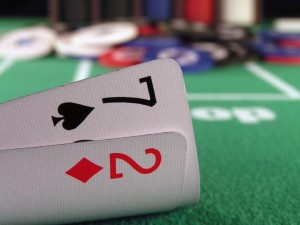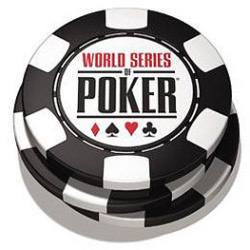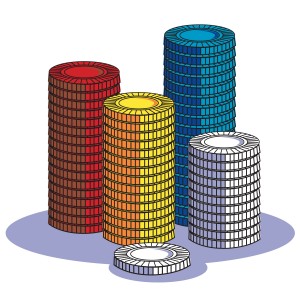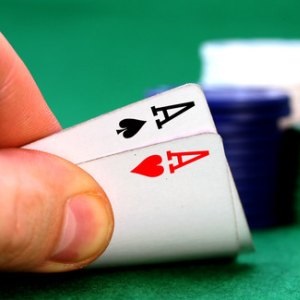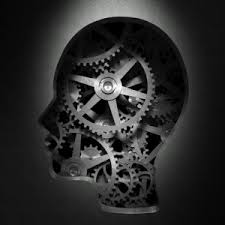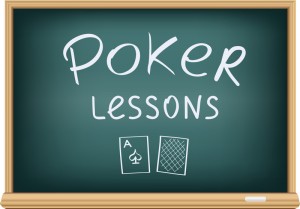One of the great things I love about the World Series of Poker main event is the big stacks you get to play in relation to the blinds. When starting out with $10,000 in chips, you can find spots to make plays that would be difficult to make in other types of events in which you start out with a small amount of chips.
In this column, I am going to discuss a couple of key hands from my play in this year’s WSOP main event. And we’ll look at a couple of other hands next time. The hands are from different days of play. This year I finished 331st out of a field of 5,619, making the money for the second year in a row. It was a great tournament and a lot of fun, but at the same time, I was looking to improve on my 33rd-place finish in 2004, so I fell a little short.
I found myself at a table with a bunch of unknowns on my first day of the main event, with one exception — a guy by the name of Doyle Brunson. I got off to a blazing start, hitting set after set, and built a very nice stack. For a few hours, I believe I was the chip leader for the day. The highlight of the day was knocking out Doyle. I say highlight because it will be a moment in my poker career that I will not forget, but at the same time, I didn’t relish knocking him out as I would most other players. I also was hoping that we would get moved to the ESPN feature table for some TV time, but unfortunately Doyle didn’t last long enough for us to make it there. In the hand against Doyle, I raised to $1,000 with 7-7, he moved all in for another $2,200, I called, and my 7-7 held up against his K-J.
But this column is about bluffing. I had a stack of about $60,000 when the following hand came up. The blinds were $150-$300 with a $50 ante. A very solid player seated immediately in front of the cutoff position raised to $900. He had a big stack for this stage of the tournament, about $30,000. With my large stack, I believed I could push this player around. He wouldn’t want to tangle with me unless he had a very big hand. I was on the button with A-9 and decided to make a play at him. I reraised to $3,200. To my surprise, he called.
The flop came Q-6-4 rainbow. He checked, I bet $3,500, and he raised $6,500, making it $10,000. At this point there was a little more than $20,000 in the pot. With what hands would he have called my raise? Q-Q, 6-6, and 4-4 were all possibilities, although I doubted he would have called with 6-6 or 4-4, since my preflop raise was quite substantial. He also might have called with some middle pairs such as J-J through 8-8. A-K and A-Q suited were other possibilities.
Given the texture of the flop, he either hit a monster or was testing his hand to see where he stood. My first thought focused on the possibility of him hitting a monster. Would he have played this hand so aggressively? If he hit a set, there were very few cards that could hurt him on the turn. I had been playing very aggressively all day, and had been hitting huge hands. My first instinct with this opponent was that he would slow-play a big hand rather than raise it on the flop in this situation. However, I wasn’t certain of this. I believed his most likely holding was A-Q.
With more than $20,000 in the pot, I decided to raise an additional $11,000. I was basically risking another $17,000 to win $20,000. This seemed like a good calculated risk to take, given my analysis of the hand so far. If I am right 50 percent of the time, my play gives me a positive expectation. My opponent went into the tank for several minutes, finally commenting, “This is either a great laydown or a very bad one.” Thirty minutes later I heard him talking about the hand to a friend, and he told him that he had folded K-K, commenting that he was a loser to either A-A or Q-Q.I can’t be sure if he was telling the truth or not, but it makes sense from the way the hand played out. Note that I could make this play only against a solid player. Against many of the weaker players in the field, I wouldn’t be able to get them to lay down A-Q.
The $20,000 I won in this pot was critical to my surviving day two, which was a very difficult day. I was at a great table but was not getting very good cards. I managed to maintain my stack level most of the day by staying aggressive and picking up pots at good times. But every time someone moved over the top of me, I never had a hand to play back at them. Then, this key hand came up.
The blinds were $400-$800 with a $100 ante. I believeI had around $77,000 in chips at the time, and raised to $2,500 from early position with 3-3. The button, a solid player with about $48,000 in chips, called my raise. The flop was 9-9-6 rainbow. I bet $4,000 and my opponent raised another $10,000, leaving himself with about $32,000 in chips. At this point there was more than $21,000 in the pot. Would he raise with trips in this situation? It would be a good play on his part, and was a possibility. However, he would make this same raise on this flop with any pair Q-Q down to 2-2. It made sense for him to call with any pair preflop, and it made sense to me that he would raise this flop with any pair. Given my analysis, his most likely holding was some middle pair. I also believed that with his position and chip stack, he would be more likely to slow-play a big hand than play it fast. Finally, any reraise on my part would basically represent that I was willing to put him all in. If I reraised, I would really be putting him to the test.
I decided to reraise another $20,000. Note that this would leave him with only about $12,000 in chips with the turn and river still to come. I had about $40,000 left at this point. From my analysis, he would have to fold any hand unless he had hit a monster. Unfortunately, I received bad news, as he moved all in. I had to call only $12,000 more, but it was apparent that I was a big underdog. I was not getting the pot odds to draw to a full house, and even worse, I could have been drawing dead. To the surprise of everyone at the table, I laid down my hand.
Note that my particular hand was irrelevant in this case. I put my opponent on a range of hands, and thought I could get him to fold as long as he hadn’t hit a monster. I don’t regret my play, as I believe my analysis was solid. In hold’em, you take calculated risks; sometimes they work, and sometimes they don’t. As a side note, my opponent later got knocked out of the tournament after a couple of bad beats. As he was walking away from the table, he said that he had had 6-6.
My next column will look at a couple more bluffs. One is an excellent example of how to exploit opponents when playing near the bubble. The other is a good example of two opponents going at each other in a small-blind versus big-blind situation.
Submit your review | |

